Nepal Hiking Team's inbox is usually inundated with clients asking about the major issues they may face during their Everest Base Camp trek and how best to tackle them. Having done the EBC trek ourselves we have first-hand experience of the problems one faces during this walking adventure.
After going through the list of queries sent by clients and some of the major difficulties that we ourselves faced, we have compiled a list of the 20 most common problems one encounter during an Everest Base Camp Trek and how best to solve them.
Everest Base Camp Trek Risk and Challenges: What makes EBC Trek Difficult?
Issues about Higher Altitude or AMS
Almost everyone trekking to Everest Base Camp suffers from it. The severity may differ from person to person, but no one escapes from the onslaught of the thin air. You start getting to feel the effects of High Altitude from Namche upwards. Giddiness, headache, and palpitations are some of the first symptoms. If not addressed on time, it may worsen, and one may develop life-threatening symptoms like HACE (high altitude cerebral edema) and pulmonary edema.
Is Everest Base Camp high altitude?
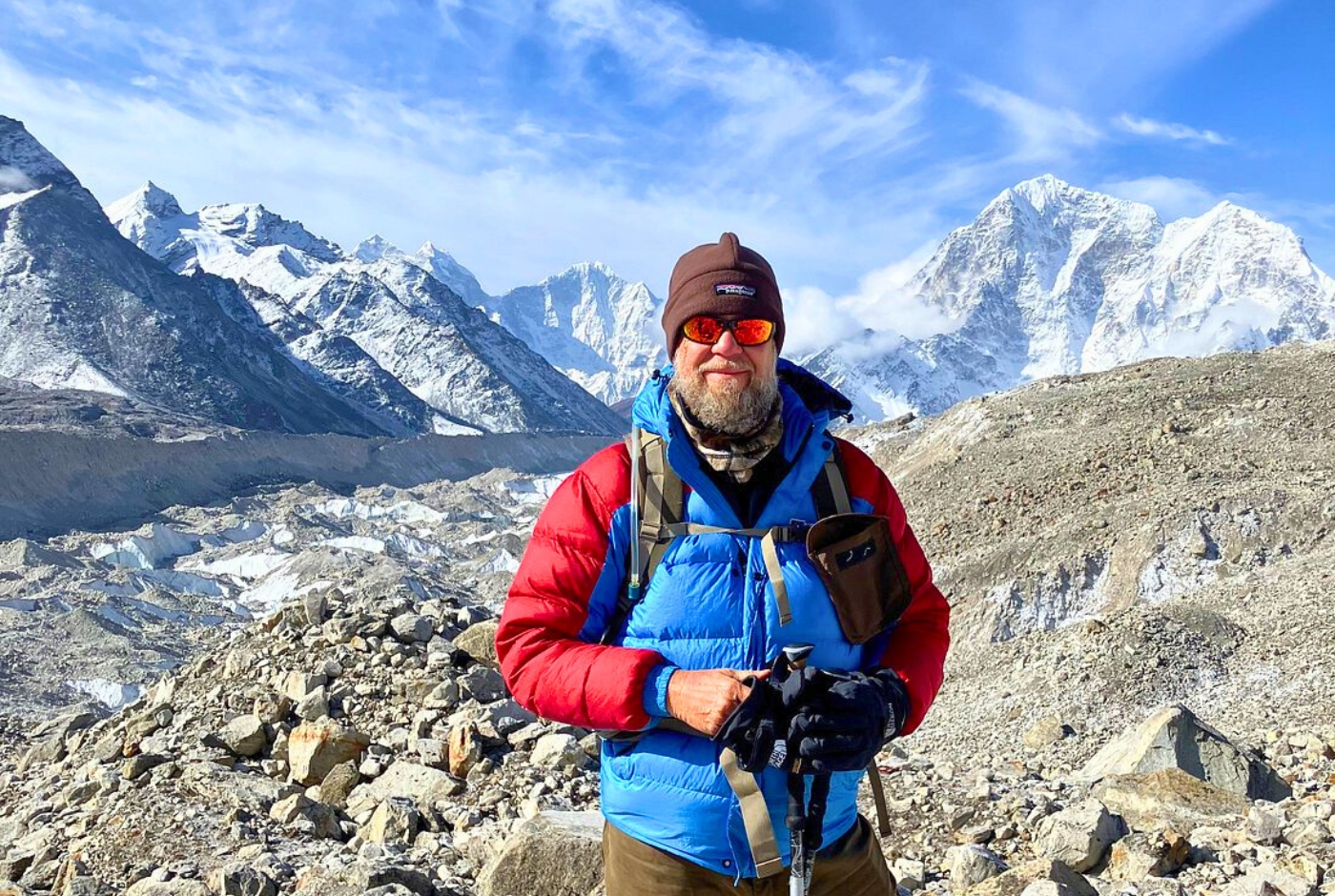
How to prevent the EBC Altitude sickness problem?
If you feel sick, it's best to descend to a lower elevation and resume your trek once you feel alright. If there's no improvement in your condition, your guide or yourself (if you are on a solo trek) can call for an emergency evacuation by helicopter, which will fly you to an advanced medical facility in Kathmandu.
To prevent risk of Altitude sickness or AMS, you need to continuously hydrate yourself as dehydration worsens the symptoms of AMS. You can have ginger tea and lots of garlic. Sherpas have been using these herbs to treat altitude sickness for ages.
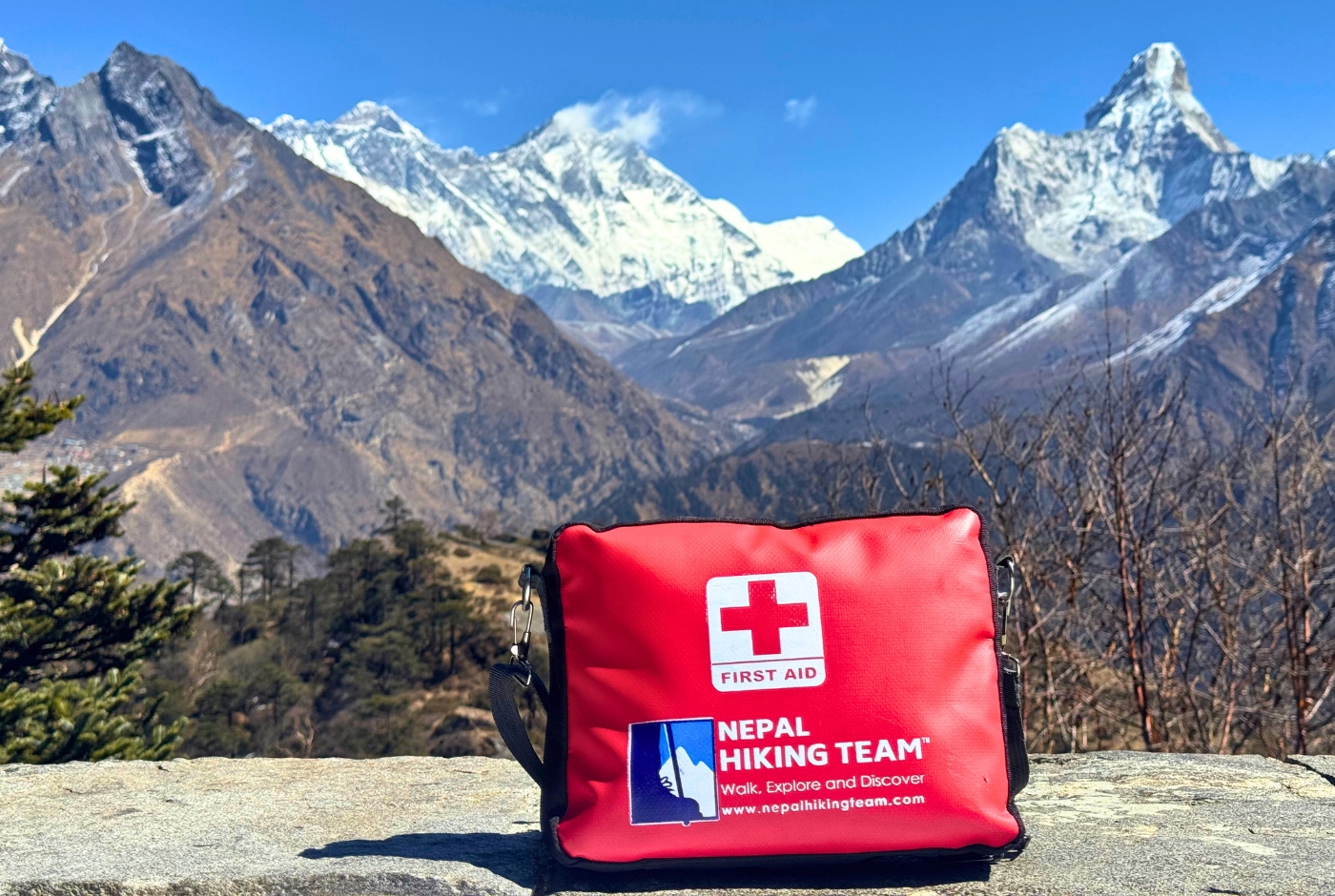
Take Diamox as soon as you feel the effect of AMS. Do not skip your acclimatization day. It is best to rest an extra day at a lower elevation before moving up to an elevation of, say, 4000 and above. Keep your pace slow and rhythmic while trekking. Don't rush and exhaust your body just because you feel physically fit. Getting too fast to high elevation is the most common cause of altitude sickness. Monitor your blood oxygen level frequently. Lastly, eat healthy and sleep well.
Flight delays and cancellations
Being one of the highest-placed airports in the world, flying into the Tenzing Hillary Airport, situated at 2846 meters, can be a struggle sometimes. Bad weather plays spoilsport most of the time causing flight delays and cancellations. The airport is located high up on a mountainous plateau which gets buffeted by strong winds and clouds as the day progresses. This is the reason why flights to Lukla are mostly operated before noon. In the afternoon, the weather conditions become extremely difficult to land a plane.
Weather Conditions: Lukla weather

Also, most of the Lukla flights will be operated via Manthali airport during the peak season from March to May and September to November due to the air traffic in Kathmandu. And travelers have to wake up early, approximately. 02:00 am, and I have to travel 4-5 hours by bus to catch the Lukla flight. It is very tiring for those who don’t have time for jetleg recovery.
We recommend you keep a few buffer days in your itinerary if your Lukla flight gets canceled or delayed. This will minimize your chances of missing your return flight when your plans get awry due to bad weather conditions or any emergency in the mountains.
Khumbu Cough
The "Khumbu cough" is a common symptom among trekkers and climbers in high-altitude regions, especially in the Khumbu region of Nepal, where the Everest Base Camp trek is located. It is a hacking cough that plagues many of the trekkers hiking to Everest Base Camp, a high-altitude region. The cough is triggered by the drying up of the membrane lining of the lungs caused by long hours of walking at high altitudes, low humidity or dry air, and extreme cold.
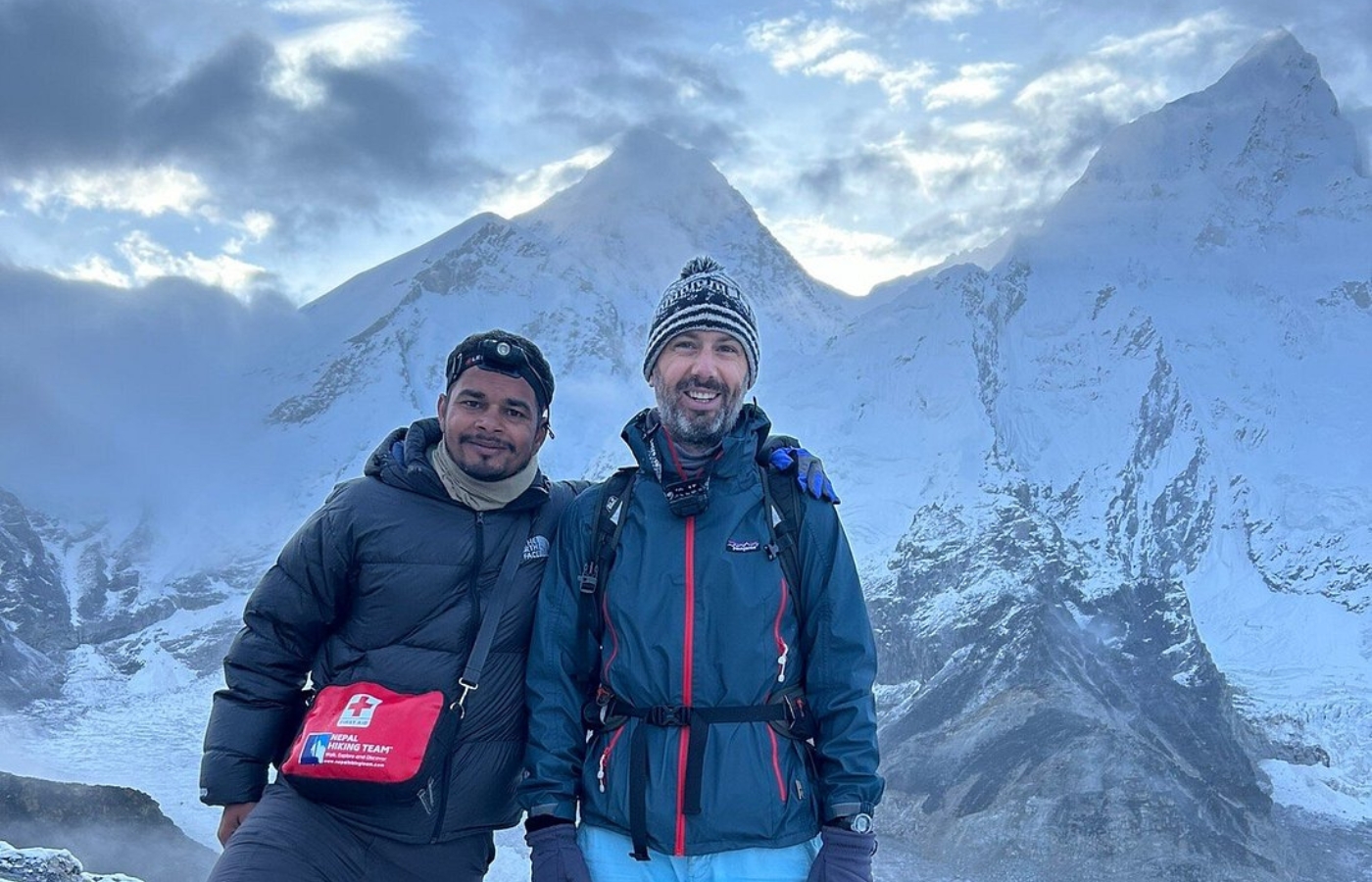
In order to safeguard yourself from the Khumbu Cough, you need to protect your chest, neck, nose, and mouth. Cover your nose and mouth with a buff and keep your neck and chest warm. Use an insulated scarf or balaclava to protect your neck from the cold during the night. Drink warm water and suck throat lozenges frequently. Try to keep your pace slow while trekking and take frequent breaks. If you feel difficulty in breathing, use supplementary oxygen.
High Cost of Food Items
Everest Region is a mountainous region with no road connectivity. Food, fuel, medicines, and building supplies are all flown in by cargo plane from the cities and carried by porters or mules up the mountains. Shopkeepers and lodge owners have to pay a huge sum of money to get the materials up in the mountains. So it's obvious the rate of the stuff that is put up for sale (food items, beverages, soap, detergent, etc.) is higher.
High Meal Price
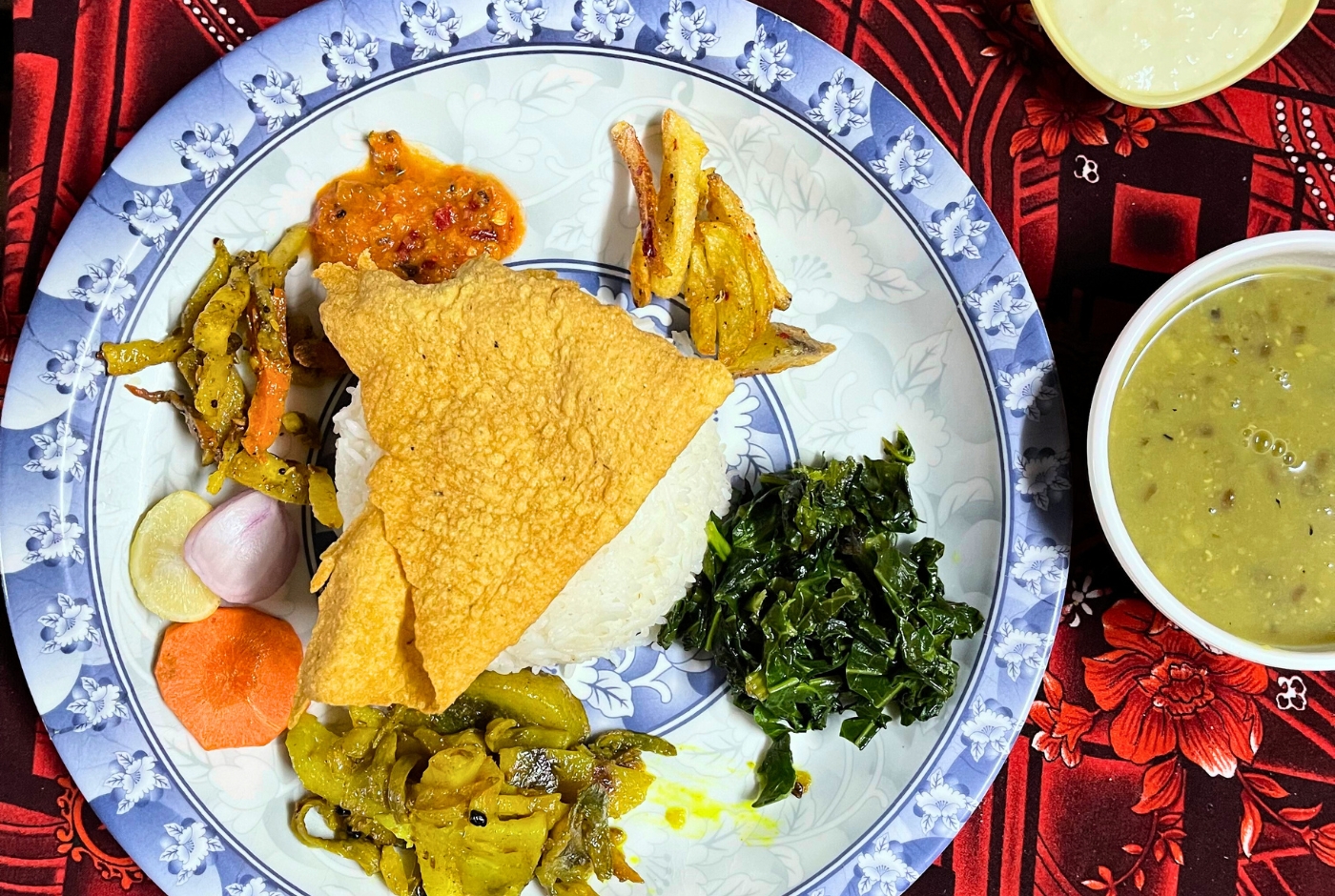
We recommend that you buy your stock of snacks from Kathmandu before leaving for Lukla if you want to save some dollars. Once you land in Khumbu, you will automatically have to pay more for the items that are available at a fraction of the cost in Kathmandu.
Long Walking Hours
Each day involves 5 to 7 hours of trekking, covering 10 to 15 kilometers, with altitude gains ranging from 300 to 800 meters, depending on the route. The trails are varied and often challenging, ranging from rocky paths and glacial moraines to stone steps, steep ascents, narrow ridgelines, and suspension bridges. Changing weather conditions can add an additional layer of difficulty, requiring adaptability and endurance. Although porters usually carry heavy loads, trekkers still manage daypacks weighing 5–8 kilograms, which include water, layers, and essentials.
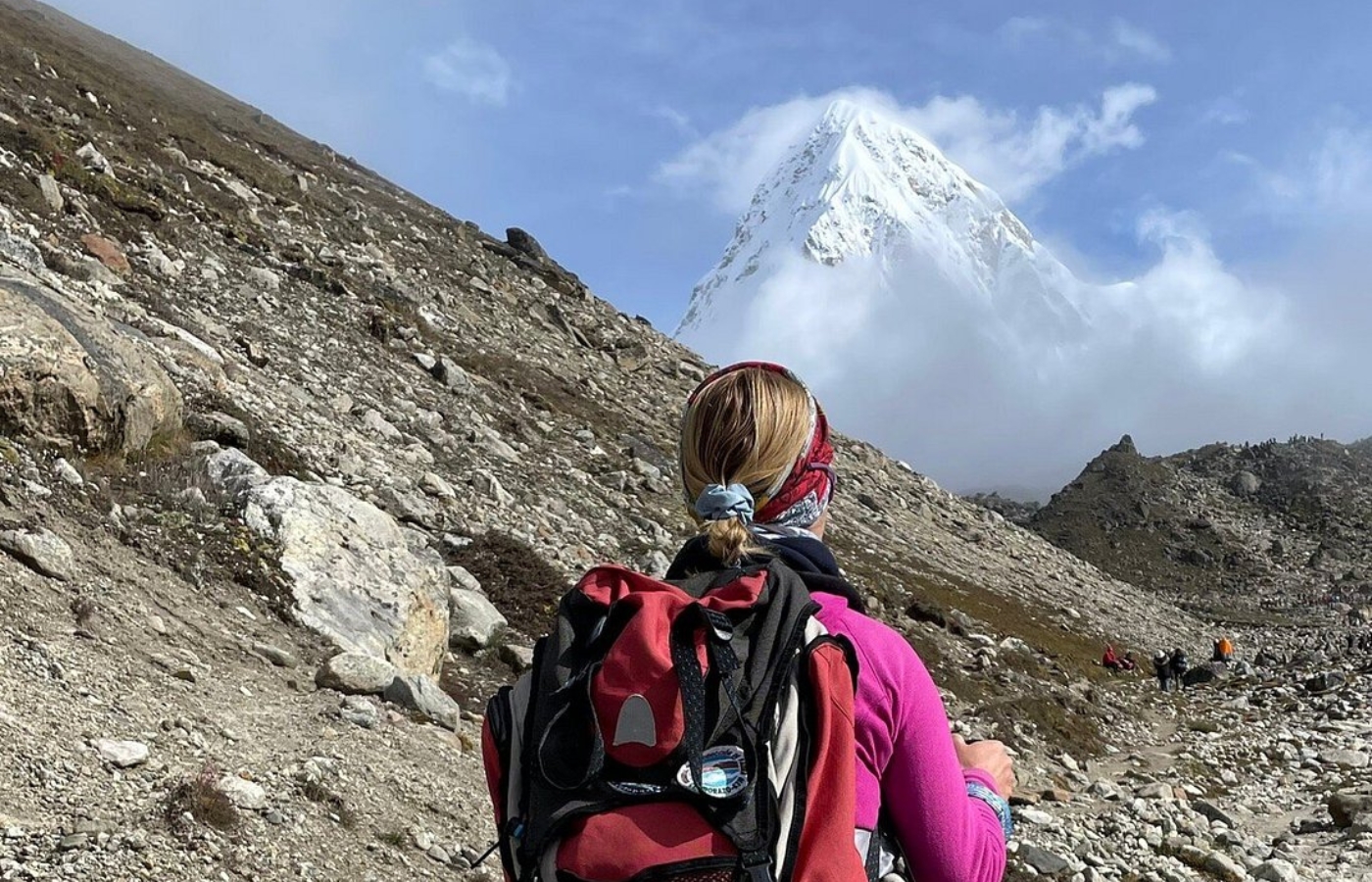
Poor Wi-Fi Connection
Although Wi-Fi is available on the trail, the network is erratic, and you have to pay extra to the lodge owners to use the internet. One can purchase Everest Link Wi-Fi cards from any of the lodges. Everest Link is the internet service provider in the Khumbu Region. While the network works fine in some places, at higher elevations, you may have to face some problems with the connection.
As you are walking in one of the most beautiful places on earth, we say it's better to enjoy nature instead of worrying about internet connectivity. Be present at the moment and enjoy your surroundings while you are there.
Going Meatless
If you're a meat lover, this might not be what you want to hear—but when it comes to trekking in the Everest region, sticking to vegetarian meals is strongly advised.
Yes, you'll find meat on the menus at many teahouses, but that doesn't mean it's safe or fresh. Here's why: animal slaughtering is prohibited in the Khumbu region due to local Buddhist beliefs, so all meat must be transported from lower villages like Kharikhola or even Kathmandu. It’s carried up by porters or yaks over several days—without refrigeration. That means by the time it reaches your plate, it could be several days old and stored without proper hygiene or cold storage.

Though meat is available, our advice is to give it a miss. Meat available at the teahouses is likely to be several days old and not fresh. Like other items, meat too is transported from low-lying towns and villages. One doesn't know how old the meat is that is served in teahouses. Moreover, there is no cold storage or freezer where meat can be stored properly. That's why it would be healthier to abstain from meat products while trekking.
Instead of meat, you can opt for a plant-based diet which is healthier and good for your system. Potatoes, spinach, and mustard greens are liberally used by teahouse owners to prepare several dishes.
To stay healthy and energized, your best bet is to go vegetarian during the trek. Luckily, the food options are more varied and satisfying than you might expect. The classic dal bhat—a wholesome mix of lentils, rice, and seasonal vegetables—is a staple across the region. It’s nutritious, filling, and provides long-lasting energy. Many teahouses also serve pasta, noodle soups, momos (dumplings), fried rice, boiled or fried potatoes, spinach, mustard greens, and more. For breakfast, you’ll find pancakes, toast, omelets, and porridge—all plant-based or easily adjusted to be.
Crowded Trail
You cannot escape the crowds if you are trekking to EBC during the high seasons (spring and autumn). Most tourists choose spring and autumn for their trek as the weather remains favorable and generally pleasant during these two seasons. But as most trekkers plan their trek during these times, the narrow trails get choked with innumerable trekking enthusiasts hitting the trail. To add to the rush, will be mule trains jostling for space.
One of the major problems is overcrowded trail
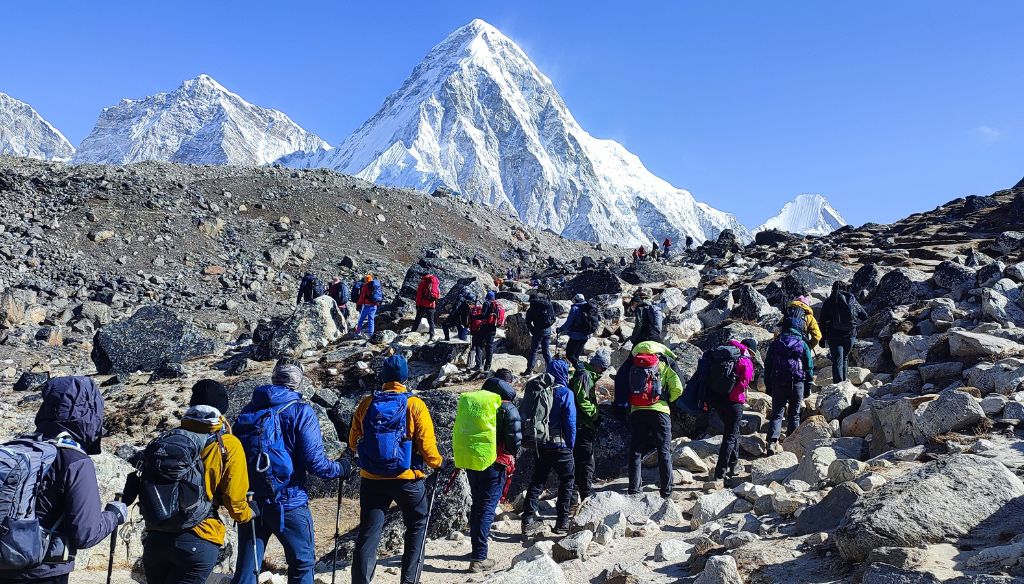
If you want to enjoy good weather and crystal clear skies, there's no option but to be among the crowds and share the mountains with hundreds of others. But if you want peace and quiet on the trail and definitely fewer people, then you will have to plan an off-season trek. Early winter is the best time to get here. The trail is secluded, the lodges remain empty, and what's more, you get to enjoy discounts.
Hot Showers, a luxury
To achieve something of value, you need to sacrifice something. That's the universal truth. In your case, to reach your dream destination Everest Base Camp, you may have to forego taking daily showers. If you have the habit of showering daily, this could pose a problem.
Most teahouses offer 'hot showers' for a price. The only thing is that there won't be overhead showers. You will have a bucket of hot water and a mug to wash yourself. While the lodges from Lukla to Namche have decent bathrooms with proper showerheads, the teahouses beyond Namche usually have utilitarian washroom facilities. Some old teahouses at the higher have toilets built outside. Be mentally prepared to use Asian or squatting-type toilets in some places.
You can carry wet wipes to clean your body. Use a wet towel and take a sponge bath if you feel unclean. It gets really cold in the higher reaches, and bathing becomes next to impossible.
No Running Water
Beyond Namche, you may have to stay overnight at lodges without running water. A bucket and mug will be provided for washing. Our advice for you is to carry enough rolls of toilet paper, wet wipes, and hand sanitizers.
Drinking Water
At high altitudes, the body loses fluids more rapidly than at sea level due to increased respiration and physical exertion. When trekking to Everest Base Camp, your body works harder to absorb oxygen in the thin air, making hydration critical. To prevent altitude sickness, muscle cramps, and dehydration, it's recommended to drink at least 3.5 to 4 liters of fluids per day—this includes water, soups, and hot drinks. If you're taking Diamox (a common altitude sickness preventive), aim for more than 4.5 liters daily, as it can cause frequent urination and dry mouth.
While hydration is essential, water safety is equally important. Natural water sources along the trail, such as streams or taps, are not safe to drink without treatment. You can stay safe by using: Boiled water (available at teahouses), Bottled mineral water, Purification tablets, iodine, or chlorine dioxide, and SteriPENs (UV light-based purification)
Boiled and bottled water can be purchased at teahouses along the route, but be mindful of your environmental impact. Avoid single-use plastic bottles where possible. A reusable metal or BPA-free bottle paired with purification methods is the most sustainable choice. Always dispose of plastic waste responsibly if you must buy bottled water.
One common complaint among trekkers is the unpleasant taste of treated water, especially when iodine or chlorine tablets are used. To improve the flavor and boost energy, consider bringing electrolyte powders or vitamin drink tablets. A helpful tip: if using iodine, wait about 40 minutes after treatment, then add a chlorine dioxide tablet—it neutralizes the taste and adds a more familiar flavor.
Outdoor Toilet
Let’s talk about something no one’s excited about—but everyone experiences on the trail: bathroom breaks.
During the Everest Base Camp trek, especially on longer stretches between villages or teahouses, there will be moments where nature calls and there’s simply no toilet in sight. Whether you're on a steep ridge or crossing a remote valley, sometimes your only option is to find a private spot behind a rock, tree, or bush. It’s uncomfortable at first—especially for those not used to outdoor bathroom situations—but honestly, you get used to it quicker than you think.
Most trekkers say the first couple of days are the most awkward. You might worry about privacy or feel uneasy squatting in the cold. The best approach? Bring a roll of toilet paper, some biodegradable wet wipes, a small trowel or ziplock bag, and hand sanitizer. And always walk a good distance away from water sources and trails—basic trekking etiquette goes a long way.
Once you're in a village or at a teahouse, the facilities vary. In popular stops like Namche, Lukla, or Dingboche, you'll often find western-style flush toilets—a welcome relief. But higher up, or in smaller villages, squat toilets are the norm. They’re basic, usually shared, and don’t always have running water. If you’ve never used one, it can feel tricky at first, especially with stiff legs after a long day of hiking—but most people adjust pretty quickly.
Medical Emergencies
While your trekking guide and team leader are trained in basic first aid and can assist with common health concerns, serious medical issues—particularly those related to altitude sickness or injury—require rapid evacuation. In such cases, helicopter rescue is the only viable option, and it comes at a high cost. This is why comprehensive travel insurance that includes high-altitude evacuation coverage is not just recommended, but essential for the Everest region.
Of course, medical issues are only one of many potential challenges. Injuries, acclimatization problems, unpredictable weather shifts, and flight delays or cancellations—especially to and from Lukla Airport—can disrupt even the best-laid plans. These are realities of trekking in the high Himalayas.
So, is it worth it? That’s a personal question—and the answer depends on your own goals, expectations, and tolerance for discomfort. For many, the physical and mental challenge is part of what makes the Everest Base Camp Trek so rewarding. The landscapes, the culture, the sense of achievement—these are things that leave a lasting imprint. But success on this journey comes from being prepared, both physically and mentally, and understanding the risks as much as the rewards.
Dizzying Heights and Steep Ups and Downs

Everest Base Camp Trek involves walking from an altitude of 2846 meters to 5644 meters. There are steep uphills and downhills, and the narrow trails have a sheer drop on one side. There are also crossings on high metal suspension bridges built over thundering rivers.
For a person suffering from vertigo and fear of heights, this can pose a real problem. The only way you can overcome your fear is by taking the bull by its horns and pushing on come what way. We have come across people who were terrified of crossing the swaying metal bridges, but they did it nonetheless. Their determination and will to not let their phobia get in the way of achieving their dream (i.e., reaching Everest Base Camp) made them overcome their fear of heights.
If you have prepared yourself for the trek by including grueling workouts and hiking to places with similar terrain, you will not have much difficulty with the steep ascents and descents. We always advise our clients to prepare their bodies for the high-altitude trails by taking up some endurance exercises and hiking with a heavy backpack. This builds up their stamina and endurance level, and they don't suffer physical discomfort while they trek to EBC.
Unheated Rooms at Lodges or Teahouses
Houses in Khumbu have no indoor heating or insulation. The only warm room at a teahouse is the communal or living area, where a big wood stove provides heating. The bedrooms with stone walls and thin plywood partitions can get pretty cold at night.
To protect yourself from the cold, you can layer your sleeping bag with blankets or quilts, which most teahouses provide. You can also fill your bottle with hot water and use it to insulate your sleeping bag.
No view of Mount Everest's summit from EBC
View of Mount Everest?

Everest Base Camp is the base of Mount Everest, the highest mountain in the world. The mountain is so massive that its summit is not visible from its base. One can see the frozen walls of this gigantic mountain, but to view its summit, you will have to hike to the nearby Kala Patthar viewpoint. From Kala Patthar, one can enjoy panoramic views of Mount Everest and other mountains.
Tough walk from Lobuche to Everest Base Camp
The toughest day of your whole trip is going to be the one that takes you to your destination – EBC. It is a long and grueling hike from Lobuche to Gorak Shep and finally to EBC. Add to that the return walks to Gorak Shep! Walking above the 5000-meter mark, where the oxygen level in the atmosphere is only about fifty percent or less, can be exhausting. Each step leaves you gasping for breath. Moreover, the cold air, snow, loose stones, and scree while crossing the glacier make your hike difficult.
Challenging Climb from Lobuche to Everest Base Camp
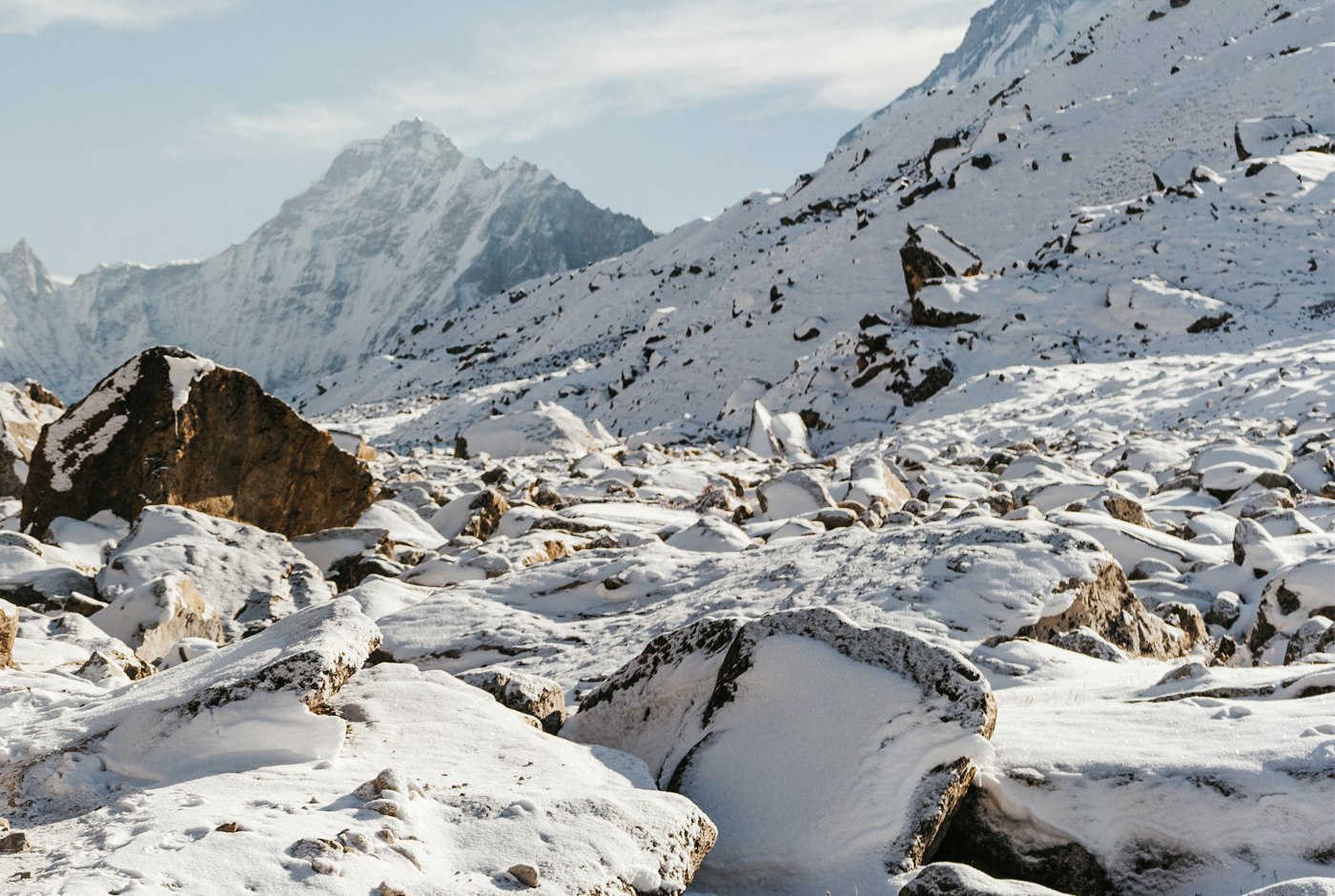
The only way of getting to EBC without getting sick or overwhelmed is to go slowly. Take rest frequently. If you are breathless and feel your heart palpitating, you can stop for a while and calm yourself. Racing to EBC while your body is screaming for rest might do more harm than good.
Mental Challenge
The Everest Base Camp trek demands beyond physical challenge—it can be mentally tough, too. Long days, cold weather, basic accommodation, and high altitude can take a toll on your mood and motivation. Some trekkers feel isolated, anxious, or frustrated, especially when dealing with altitude symptoms or unexpected delays like flight cancellations.
Disconnection from the internet, fatigue, and the repetitive routine can also wear you down. It’s normal to have moments where you question why you’re doing it.
How to tackle the mental challenge of the EBC Trek?
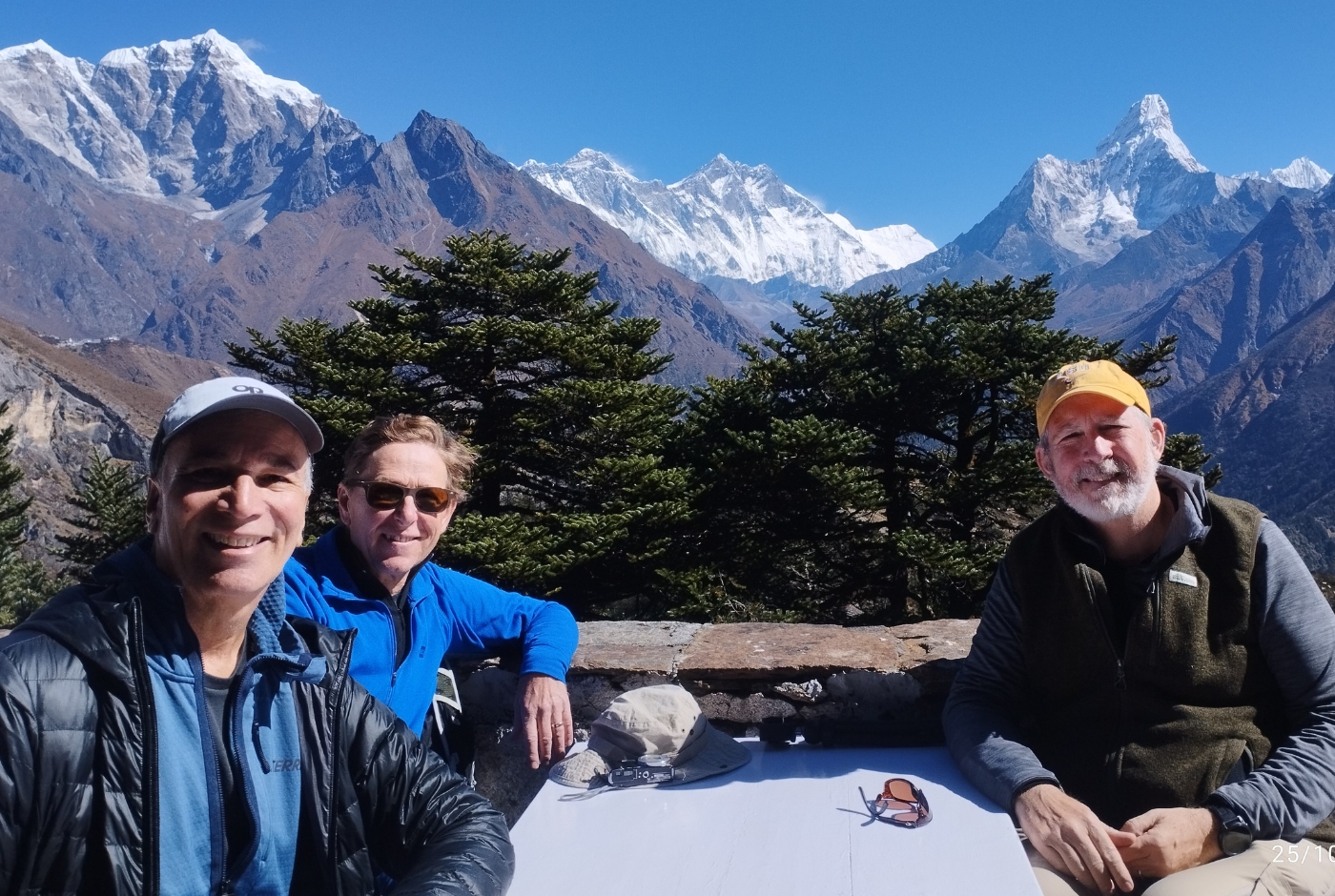
The best way to cope? Take it one day at a time. Stay flexible, talk to your guide if you feel off, and keep your goal in mind. A positive mindset, a few comfort items from home, and small daily wins can make all the difference.
Mule and Yak Caravans Choking the Trail

You will be sharing the trail with pack animals which are used to transport items from Lukla to villages situated in the higher reaches. It can be unnerving at times to walk in the midst of a great herd rushing towards you from the opposite direction. Always stop and let the pack animals pass. Keep to the side of the mountain, instead of the exposed side. Don't try to pet or touch the animals.
Cold and Unpredictable Weather
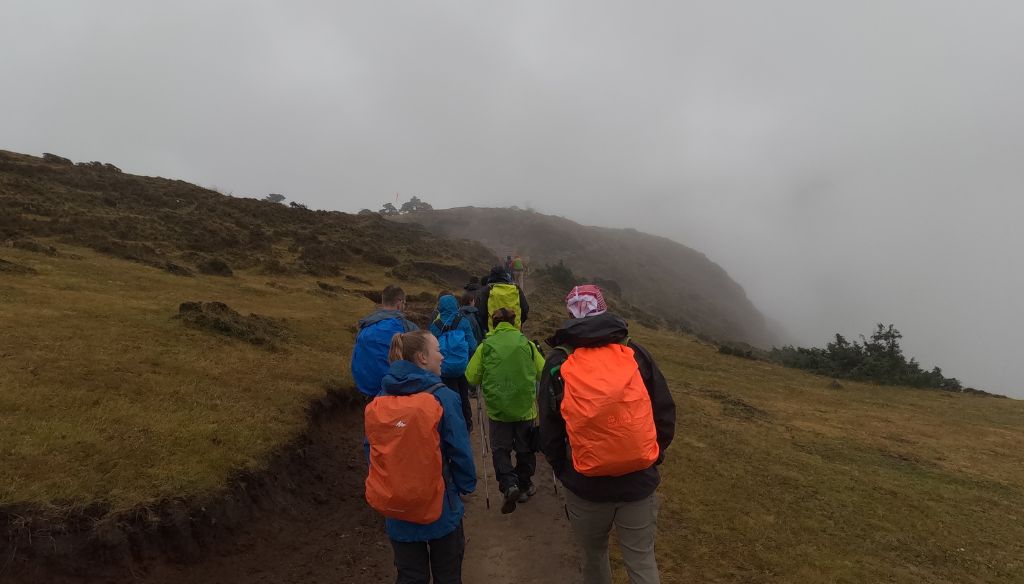
One cannot predict what the weather will be like in the mountains. One moment it would be sunny and clear, and the next minute clouds would roll in and obscure the view. Sometimes there will be precipitation and snow on the trail. It also gets quite cold during the night.
Our advice is to go fully prepared. Include items that can be used in all four seasons while packing for your trek - protective rain gear, insulated and light and airy outfits.
Overall Difficulty of Everest Base Camp Trek: EBC Trek Difficulty Level
How difficult is Everest Base Camp Trek? That’s the first question, which often starts as a quiet thought and soon turns into a serious consideration the moment you look beyond the photos and into the reality of high-altitude trekking. And it’s a fair one. You imagine snow trails winding beneath the tallest peaks, the cold creeping into your gear, and your legs aching after a day of climbing. Can you really handle it? Will the altitude, isolation, or lack of comfort be too much? The truth is, this isn’t a stroll through the hills. But it also isn’t reserved for elite athletes. What it demands is a calm mind, a committed heart, and a body trained to endure more than it complains.
Is Everest Base Camp really challenging and risky? The answer to this question is that the Everest Base Camp trek is a moderate to strenuous challenging trek, largely due to its demanding altitude, rugged terrain, and unpredictable weather. Spanning 130 kilometers round-trip and reaching an elevation of 5,545 meters at Kalapatthar, the route requires physical endurance and mental resilience. Thin air, symptoms of altitude sickness, and the steep ascents around Namche, Tengboche, and Thukla Pass test even seasoned trekkers. The trail also varies widely—from forested paths and river crossings to rocky glacial moraines—all while amenities grow sparser the higher you climb. Despite these challenges, with sufficient acclimatization days, a steady pace, and awareness of weather fluctuations, the trek is achievable for those who prepare adequately.
What often intensifies the difficulty is the lack of prior trekking experience or fitness preparation. Physical training focused on stamina, hill climbs, and cardiovascular strength is essential. Nutritional caution, especially avoiding meat due to hygiene risks at higher altitudes, supports endurance. Mental preparation plays an equally vital role—trekkers must be ready to face long, cold days, limited comfort, and the occasional delay due to Lukla’s infamously unpredictable flights. Still, this trek remains within reach for first-timers willing to train, research, and respect the demands of high-altitude trekking. With the right mindset and planning, it becomes a rewarding challenge rather than an insurmountable one.
Conclusion
Despite all the problems one encounters on the trail, Everest Base Camp Trek remains one of the best-loved treks in the world. Trekkers make their way to Nepal from around the globe to complete this once-in-a-lifetime trekking adventure. Although utilitarian in some places, the facilities provided on the trail make the journey easier for the trekkers. Resting in a proper house, enjoying a warm meal, and sleeping in a warm bed at the end of the day beats camping outside in frigid temperatures.
Trekking to Everest Base Camp is a beautiful and memorable experience. You just have to focus on the positive aspects – gorgeous scenery, dramatic landscape, and a wonderful cultural experience - to make it to the top of the world.



Post a Comment